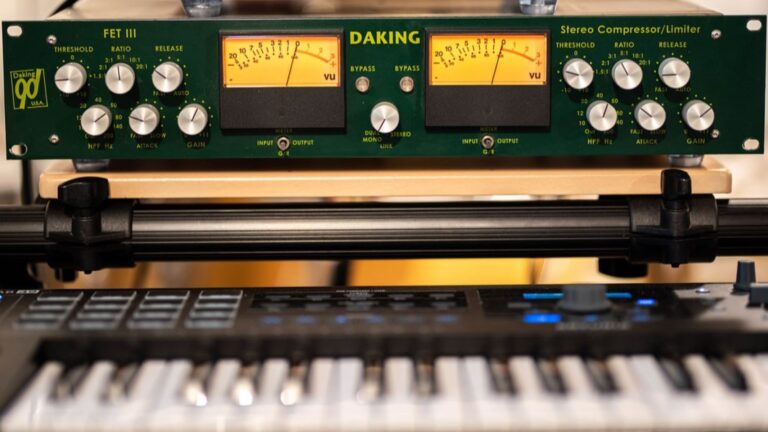Designing a Personal Safety System Using Sound
Personal safety is a concern we all share. Whether walking alone at night, traveling in unfamiliar places, or just wanting an extra layer of security, personal safety systems can be lifesavers. Traditionally, these systems involve alarms, GPS tracking, or physical devices like pepper spray. But what if sound could be the cornerstone of your safety system? Today, we’re diving deep into designing a personal safety system that uses sound as its primary tool. Ready? Let’s get started.
Why Use Sound for Personal Safety?
Sound is one of the most powerful and immediate ways to capture attention, making it a natural choice for personal safety systems. Unlike visual signals that require someone to be looking in the right direction, sound travels through space and can reach people who may not even be nearby visually but are within earshot. This makes it an incredibly effective tool when you need to alert others quickly during an emergency. A sudden, loud noise can disrupt the environment and prompt an immediate reaction, drawing help or scaring off potential threats before things escalate.
Another significant advantage of sound-based safety systems is that they offer a non-violent form of defense. While many traditional personal safety tools rely on physical force or deterrence through intimidation, sound-based alarms create a protective barrier without causing harm to anyone. This not only reduces the risk of injury but also avoids legal complications that might arise from using weapons or physical force. In essence, sound systems empower users to protect themselves by leveraging human instinct to respond to alarming noises rather than confront danger directly.
Accessibility and affordability are also major reasons why sound-based personal safety systems are gaining popularity. Many of us already carry smartphones capable of producing loud alerts or sirens, so implementing a sound-based safety solution often doesn’t require purchasing specialized equipment. This democratizes safety, making it possible for almost anyone to have an effective alarm system at their fingertips. Additionally, sound devices tend to be lightweight, portable, and easy to operate, removing barriers that might prevent people from carrying or using more cumbersome safety tools.
Finally, the versatility of sound makes it suitable for a wide range of environments and situations. Whether you’re indoors in a quiet setting or outdoors in a bustling city, sound can adapt to the context to serve your safety needs. It can be tailored in volume, frequency, and pattern to ensure it stands out against background noise and reaches the right audience. This flexibility means sound-based systems can be used by students, travelers, elderly individuals, or anyone looking for an easy yet effective way to stay safe wherever they go.
Understanding the Basics of Sound in Safety Systems
Before diving into designing a personal safety system using sound, it’s essential to grasp how sound functions effectively in this role. The impact of a sound alarm depends on several key factors that influence how well it grabs attention and communicates urgency. These factors work together to ensure the sound not only reaches the intended audience but also prompts an immediate response. Here is a detailed list of the most important elements that make sound effective for safety purposes:
- Volume: The loudness of the sound is crucial because it determines how far the sound can travel and how quickly it attracts attention. A louder sound cuts through ambient noise, making sure that people nearby can hear the alarm even in noisy or crowded places. However, the volume should be balanced to avoid causing hearing damage or being so disruptive that it becomes a nuisance.
- Frequency: The pitch of the sound plays a vital role in its effectiveness. Higher frequency sounds, especially those between 3 kHz and 6 kHz, are generally more piercing and noticeable than lower frequencies. These frequencies tend to stand out more clearly against background noise, which is often dominated by lower-pitched sounds like traffic or human chatter.
- Duration: The length of the sound alert is also significant. Too short a beep may go unnoticed or be mistaken for a false alarm, while a sound that lasts too long can drain battery life and annoy bystanders. An ideal alarm duration is long enough to alert people but short enough to conserve power and prevent fatigue.
- Pattern: The rhythm or sequence of the sound can enhance recognition and urgency. Repetitive or irregular patterns, such as alternating beeps or pulsing sirens, are easier to identify and differentiate from common background noises. A well-designed pattern makes the alarm instantly recognizable and signals that immediate attention is required.
- Timbre: This refers to the quality or character of the sound, which can influence how unpleasant or alarming it feels. Sharp, harsh, or metallic sounds tend to provoke a stronger reaction, which is useful in emergencies where immediate attention is necessary.
- Directionality: Depending on the speaker or device used, the way sound is projected—whether omnidirectional or focused—can affect how well the alert reaches people in different directions. Designing for broad coverage ensures more people can hear the alarm regardless of where they are positioned.
- Environmental Adaptability: The sound system should consider the environment where it will be used. Outdoor settings might require louder and more robust sounds to compete with wind or city noise, while indoor alarms might use softer but more penetrating tones that bounce off walls to fill the space effectively.
Key Components of a Sound-Based Personal Safety System
| Component | Description | Examples | Important Features | Considerations |
| Sound Generator | The device or module that produces the alert sound. | Speaker, buzzer, smartphone | Loudness, clarity, customizable tones | Must be audible in various environments; support multiple sound patterns |
| Activation Mechanism | The trigger that activates the sound alert. | Physical button, wearable switch, mobile app | Easy to access, quick activation | Should minimize accidental triggers; user-friendly interface |
| Power Source | Supplies energy to the system for operation. | Rechargeable battery, disposable battery | Long battery life, reliability | Portability requires lightweight batteries; energy efficiency is key |
| Communication Layer | Optional feature for sending alerts or location data. | SMS, push notifications, voice calls | Real-time communication, location sharing | Privacy and security of data; connectivity requirements |
| Device Durability | Physical resilience and usability of the device. | Waterproof casing, shockproof design | Weather resistance, robustness | Must withstand everyday use and emergency conditions |
Step-by-Step Guide to Designing Your Sound-Based Safety System
The first and perhaps most crucial step in designing a sound-based personal safety system is defining your safety goals. This means taking a close look at the specific threats or emergencies you want your system to address. Are you trying to ward off potential attackers, alert passersby to your distress, or immediately notify emergency services? Clarifying these objectives early on shapes every other aspect of your design—from the type of sound you choose to how the system is activated. Understanding your primary use cases ensures your system will be practical and effective in real-life situations.
Once your safety goals are clear, the next focus is on choosing the right sound. The sound must be loud, sharp, and distinct enough to cut through everyday noise and grab immediate attention. High-pitched tones such as sirens or whistles tend to be more piercing and harder to ignore, which makes them ideal for emergencies. It’s important to avoid sounds that could easily blend into background noise like city traffic or crowded environments, as this can render your alarm ineffective. The right sound acts like a beacon, alerting everyone around you that something is wrong and prompting a quick response.
Beyond just volume and pitch, it’s important to consider cultural contexts when selecting your alarm sound. Different sounds carry different meanings in various cultures and environments, so a tone that signals danger in one place might be confusing or even offensive in another. This cultural sensitivity can improve the usability and acceptance of your system, especially if you plan to market or use it in diverse regions. Thoughtful sound selection can make your alarm universally understood or at least locally appropriate, which enhances its overall effectiveness.
Finally, these two foundational steps—defining your goals and choosing the sound—serve as a guidepost for the rest of your design process. They influence decisions about the device’s hardware, activation methods, power requirements, and any additional features like communication layers. Taking the time to carefully think through these elements at the start will result in a personal safety system that’s not only functional but intuitive and reliable when you need it most. This thoughtful approach ultimately means the difference between an alarm that saves lives and one that gets ignored.
Technical Considerations for Sound Design
When designing a sound-based personal safety system, several technical factors must be carefully evaluated to ensure the sound is effective in real-world environments. Understanding human hearing capabilities and environmental challenges is key to crafting an alarm that reliably attracts attention and prompts action. Here is a detailed list of important technical considerations to keep in mind:
- Hearing Range: Human hearing typically spans from 20 Hz to 20 kHz, but not all frequencies are perceived equally well. Sounds in the higher frequency range, especially above 3 kHz, tend to be more noticeable and can cut through background noise more effectively, which is critical for alarms in noisy environments.
- Frequency Selection: The ideal frequency range for safety alarms generally falls between 3 kHz and 6 kHz. This range produces piercing sounds that stand out in crowded or noisy spaces, making it easier for people to recognize the alarm quickly without it being masked by everyday sounds like traffic, chatter, or machinery.
- Volume Level: Volume is a fundamental aspect of sound design for safety systems. Alarms should ideally be louder than 90 decibels (dB) to ensure they catch immediate attention. However, it’s important to balance loudness with safety, as excessively loud sounds can cause hearing damage or lead to negative reactions in some environments.
- Duration of Sound: The length of the alarm matters too. Sounds that last between 5 and 15 seconds tend to be long enough to be noticed and understood as urgent, yet not so long that they drain the device’s battery or cause unnecessary annoyance. Proper duration helps maintain battery efficiency while ensuring the alarm fulfills its purpose.
- Sound Pattern and Rhythm: Beyond frequency and volume, the pattern or rhythm of the sound can greatly influence recognition and urgency. Repetitive or pulsating patterns are easier to distinguish from ambient noise and help signal an emergency more clearly than a continuous tone.
- Environmental Noise Levels: Urban and outdoor environments often have high ambient noise, including traffic, construction, and crowds. The alarm sound must be carefully designed to rise above this noise without contributing excessively to noise pollution. Testing sound effectiveness in real-world settings is vital.
- Directionality and Sound Projection: The way sound is emitted from the device influences how well it is heard in different directions. Omnidirectional speakers disperse sound broadly, covering a wide area, while directional speakers focus sound toward a specific target area. Choosing the right approach depends on the use case and environment.
Hardware Design Tips
| Aspect | Description | Key Features | Benefits | Design Considerations |
| Portability | The device should be easy to carry daily. | Lightweight materials, compact size | Encourages consistent use and access | Avoid bulky or heavy components |
| Ease of Use | Activation must be quick and simple. | Large, accessible panic button | Enables fast response during emergencies | Placement on keychain, wearable, or clothing |
| Durability | Device must withstand daily wear and weather. | Waterproof or water-resistant casing | Reliable performance in various conditions | Use rugged materials, seal electronics |
| Power Management | Efficient and sustainable power source. | Rechargeable battery, low-battery alerts | Long usage time and timely maintenance | Battery type choice and charging method |
| User Feedback | Clear indicators for status and alerts. | LED lights, vibration alerts | Confirms activation and battery status | Intuitive feedback to reduce user errors |
Software Integration: Making It Smarter
Integrating software into a sound-based personal safety system opens up a whole new level of intelligence and convenience. Mobile apps, for instance, can turn an ordinary smartphone into a powerful safety device by using built-in sensors like accelerometers and gyroscopes. These sensors can detect unusual movements such as falls, sudden impacts, or abrupt shakes, which are often signs of distress or emergencies. When such events are detected, the app can automatically trigger loud alarm sounds to attract attention or send instant alerts to predefined contacts, ensuring help is on the way without the user needing to take any action.
Customization plays a big role in making software-based safety systems user-friendly and effective. Mobile apps allow users to personalize various settings according to their needs and preferences. This includes choosing different alert sounds that are most effective in their environment, setting the volume level, and selecting who should receive emergency notifications—whether it’s close friends, family, or professional responders. This level of control means the system can be tailored to fit the unique lifestyle and safety requirements of each individual, making it more likely to be used consistently and confidently.
Voice commands add yet another layer of sophistication and ease of use to personal safety devices. In situations where reaching for a button or device is impossible—like if someone is immobilized or their hands are occupied—voice-activated alarms offer a hands-free solution. By simply speaking a command or keyword, the system can activate an alarm or send distress signals. This functionality not only increases accessibility for people with disabilities but also enhances safety by allowing quick, discreet alerts when verbal communication is still possible but physical interaction is limited.
Together, these software integrations transform a basic sound alarm into a smart, responsive safety companion. They reduce the need for manual activation, increase the chances of timely help, and offer a seamless, personalized experience. As technology advances, we can expect these features to become even more intuitive and integrated, making personal safety systems smarter and more reliable than ever before.







